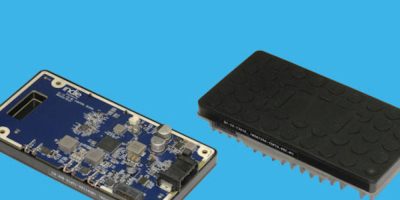Rohm has developed a high-power laser diode – the RLD90QZW8. It is ideal for industrial equipment and consumer applications requiring distance measurement and spatial recognition.
In recent years, LiDAR is being increasingly adopted in a wide range of applications that require automation – including AGVs (Automated Guided Vehicles), robot vacuums, and autonomous vehicles – where it is necessary to accurately measure distance and recognise space. In this context, there is a need to improve the performance and output of laser diodes when used as light sources to increase detection distance and accuracy.
To meet this demand, Rohm established original patented technology to achieve a narrower emission width that contributes to longer range and higher accuracy in LiDAR applications. In 2019, Rohm released the 25W laser diode RLD90QZW5 followed by the 75W laser diode RLD90QZW3 in 2021. In response to the growing market demand for even higher output, Rohm developed the new 120W laser diode.
The RLD90QZW8 is a 120W infrared high output laser diode developed for LiDAR used in distance measurement and spatial recognition in 3D ToF systems. Original device development technology allows Rohm to reduce the temperature dependence of the laser wavelength by 66% over general products, to just Δ11.6nm (Ave. 0.10nm/°C). This makes it possible to narrow the bandpass filter while extending the detection range of LiDAR. At the same time, a uniform light intensity of 97% is achieved over the industry’s smallest class* of emission width of 270µm, representing a range of 264µm that contributes to higher resolution. Additional features that include high power-to-light conversion efficiency (PCE) enables efficient optical output that contributes to lower power consumption in LiDAR applications.
A variety of design support materials necessary for integrating and evaluating the new product is available free of charge on Rohm’s website that facilitate market introduction. In order to drive laser diodes with high nano-second order speed required for LiDAR applications, ROHM developed a reference design available now that combines ROHM’s 150V EcoGaN™ HEMT and gate drivers.
Rohm has also acquired certification under the IATF 16949 automotive quality management standard for both front-end and back-end processes at its manufacturing facilities. As a result, product development of laser diodes for automotive applications (AEC-Q102 compliant) is underway, with commercialisation planned by the end of 2024.







